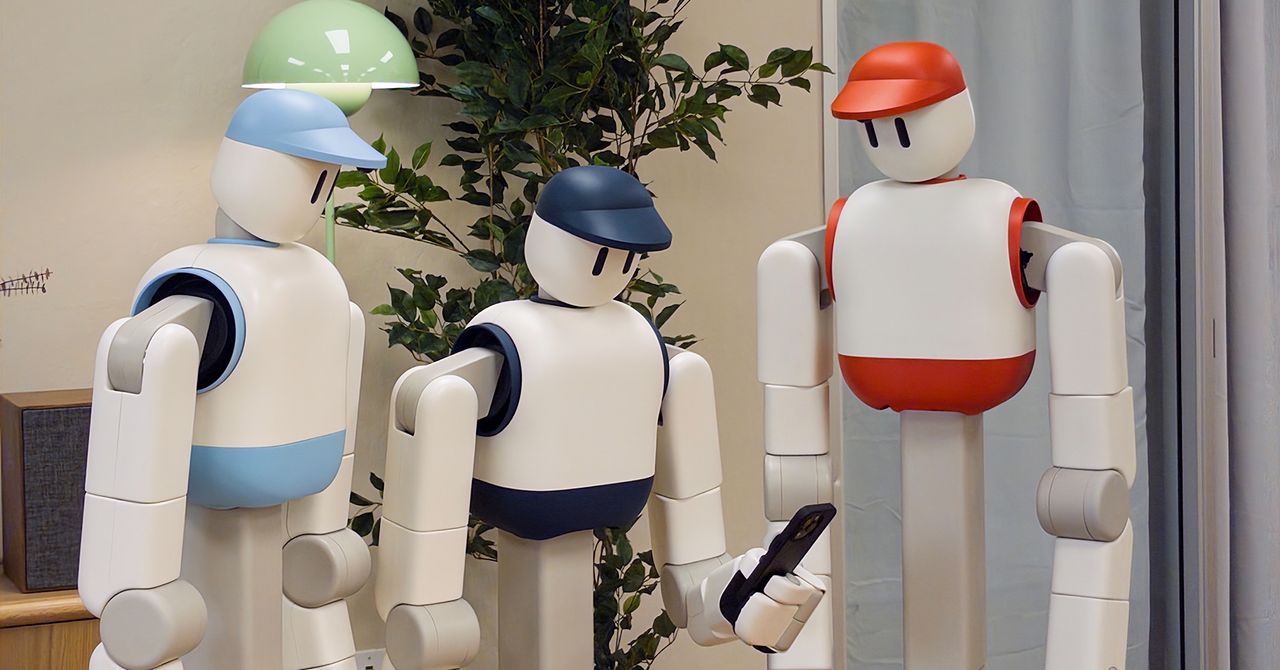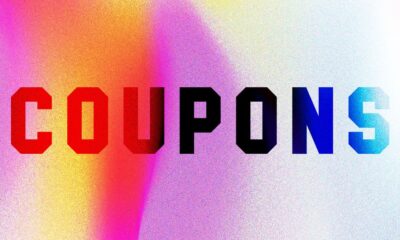Tech
Cracking a long-standing weakness in a classic algorithm for programming reconfigurable chips

Researchers from EPFL, AMD, and the University of Novi Sad have uncovered a long-standing inefficiency in the algorithm that programs millions of reconfigurable chips used worldwide, a discovery that could reshape how future generations of these are designed and programmed.
Many industries, including telecoms, automotive, aerospace and particle physics rely on a special breed of chip called the Field-Programmable Gate Array (FPGA). Unlike traditional chips, FPGAs can be reconfigured almost endlessly, making them invaluable in fast-moving fields where designing a custom chip would take years and cost a fortune. But this flexibility comes with a catch: FPGA efficiency depends heavily on the software used to program them.
Since the late 1990s, an algorithm known as PathFinder has been the backbone of FPGA routing. Its job: connecting thousands of tiny circuit components without creating overlaps.
For decades, it worked so well that it became the standard. However, as circuits grew larger, engineers began encountering frustrating slowdowns and occasional outright failures. Designs that should have worked were often labeled “unroutable.”
Now, with colleagues from the University of Novi Sad and the technology company AMD, researchers from the Parallel Systems Architecture Laboratory (PARSA) in the School of Computer and Communication Sciences have come one step closer to untangling the inner workings of this classic algorithm.
In their paper, which received the Best Paper Award at the 33rd IEEE International Symposium on Field-Programmable Custom Computing Machines, they revealed why these failures happen and how PathFinder’s limits can be overcome.
Cracks in the algorithm
“In fact, it’s not surprising that PathFinder sometimes fails,” explained Shashwat Shrivastava, Ph.D. student with PARSA and first author of the paper.
“Very early on, researchers showed that the problem behind FPGA routing is extremely hard. Later, the creators of the original algorithm, together with a few collaborators, found cases where PathFinder would never succeed—but they noted such cases wouldn’t appear in practice.”
For decades, it seemed they were correct—PathFinder worked surprisingly well.
“PathFinder worked so well, in fact, that when it failed, people rarely questioned the algorithm. Instead of venturing inside to see what was going on, they tweaked its parameters, modified circuits, or switched to larger FPGAs,” added Stefan Nikolić, an EPFL alumnus and now a professor at the University of Novi Sad.
“Part of the reason for this is that it is rather difficult to understand what PathFinder is actually doing on examples of practical importance. Modern circuits are so large that their signals form veritable on-chip jungles.”
Enter the forest
“So, we really needed to look at the individual trees in that jungle,” continued Shrivastava, “and I really mean trees. Each signal—a connection that carries information between circuit components—must reach multiple destinations without overlapping other signals. FPGA routing is essentially about building one tree for each signal on the chip.”
While working on another project that relied on PathFinder, the team kept seeing results that defied intuition. At first, they blamed external factors, not the algorithm itself. Eventually, they realized they needed controlled examples: small, tricky cases where a solution definitely existed, and in which PathFinder should succeed.
“We needed real, practical examples, and lots of them, to understand what was really going on,” Shrivastava explains. “So, we built a framework to automatically extract small, hard problems from real circuits. Watching how PathFinder struggled with these helped us uncover issues that had remained hidden for a very long time.”
Power in partnership
“This breakthrough would have been much harder without industry support,” said Mirjana Stojilović, Shrivastava’s Ph.D. advisor. “From the start, we collaborated with Chirag Ravishankar and Dinesh Gaitonde from AMD. They helped us model FPGAs as close as possible to commercial devices, ensuring our findings had real-world impact.”
Once the framework was ready, things moved quickly. The team found that PathFinder often built routing trees larger than necessary, increasing the risk of overlaps. The problem came from the order in which it created and added new branches to the trees.
“In retrospect, this is intuitive, but somehow it went largely unnoticed for many years,” Shrivastava said. “Our first solution was simple: try different orders and pick the one that results in the smallest tree. Experimentally, it worked surprisingly well.”
The team is now exploring more scalable solutions. “I am especially proud that Summer@EPFL interns have been contributing significantly. One of them, Sun Tanaka, is also a co-author of the paper,” added Stojilović.
“Our discovery could reshape how millions of FPGAs are programmed and influence the design of future generations of these reconfigurable chips.”
More information:
Shashwat Shrivastava et al, Guaranteed Yet Hard to Find: Uncovering FPGA Routing Convergence Paradox, 2025 IEEE 33rd Annual International Symposium on Field-Programmable Custom Computing Machines (FCCM) (2025). DOI: 10.1109/fccm62733.2025.00060
Citation:
Cracking a long-standing weakness in a classic algorithm for programming reconfigurable chips (2025, October 3)
retrieved 3 October 2025
from https://techxplore.com/news/2025-10-weakness-classic-algorithm-reconfigurable-chips.html
This document is subject to copyright. Apart from any fair dealing for the purpose of private study or research, no
part may be reproduced without the written permission. The content is provided for information purposes only.
Tech
This Excellent LG OLED Is Deeply Discounted Before Black Friday

If you’re looking to make the move to an OLED screen, but don’t feel like stomaching the high price tag usually associated with the tech, you might consider the LG B5 OLED. It’s already a great screen at the full price, but Best Buy currently has it marked down to just $600. That’s a significant markdown for this TV, which can typically be found between $1,000 and $1,200.
The star of the show is LG’s OLED panel, the type typically found on TVs twice the price. If you’re curious why that’s so important, we have a great explainer that breaks down the difference between all the different panel types. The important takeaway here is that the pixels emit their own light, allowing individual spots of the screen to be perfectly black. The result is impressive, with incredible contrast between the brightest and darkest spots that’s best understood by seeing it in person.
The other areas of the screen are excellent as well. Our reviewer Ryan Waniata opined that “there’s a sumptuous touch to images of all sorts,” and liked the colors as well, which were accurate and sharp without any adjustment. The screen has a natural and vivid performance to it that feels all the more impressive when you consider the price point.
It has the chops for some gaming too, with feature support that meets or beats higher-end screens. With four proper HDMI 2.1 inputs, your consoles won’t need to fight for the good ports, which is a nice surprise for the price point. It can reach a refresh rate of up to 120Hz, which is just fine for most console gamers, and has both AMD FreeSync Premium and Nvidia G-Sync to make sure everything is smooth, plus Auto Low Latency Mode for quick response times.
Overall, the LG B5 OLED is a solid value at its full price, but the steep discount here makes this a really sweet upgrade or first OLED. If you’re still not sold, make sure to swing by our roundup of all the best TVs available, including the B5 and other OLEDs.
Tech
This Home Robot Clears Tables and Loads the Dishwasher All by Itself

Memo may not be the world’s fastest barista, but it is impressive—for a robot.
I recently watched as Memo, a new home robot from a company called Sunday Robotics, made coffee in an open-plan kitchen in Mountain View, California.
Memo looks like something out of Wall-E, with a gleaming white body, two arms, a friendly cartoonish face, and a red baseball cap. Rather than using legs as a fully humanoid robot would, Memo moves around using a wheeled platform and changes its height by sliding up and down a central column atop that platform.
The robot responded to a request for an espresso by rolling over to a countertop, and then using two pincerlike hands to slowly go through each step required to operate an espresso machine. It filled the porta filter with coffee grounds, tamped them down, slotted the porta filter into place and put a coffee cup below, pressed the buttons needed to start the machine, and finally retrieved the hot drink.
“We want to build robots that free people from laundry, from the dishes, from all chores,” Tony Zhao, cofounder and CEO of Sunday Robotics, told me as the robot brought the coffee over to the person who requested it.
Making a cup of espresso might not seem spectacular, but the feat is ridiculously hard for a robot to do in a real, messy kitchen. It requires the ability to identify different objects, figure out how to grasp them reliably, and use those objects properly. Sunday is not only building its own hardware but also training the models that allow its system to learn. “We think the way to make a home robot is to be full-stack, and to vertically integrate,” Zhao says. “And that’s a very ambitious thing to do.”
Courtesy of Sunday Robotics
Tech
Your Mac Needs Some Friends. These Are the Best Accessories We’ve Tested

More Good Mac Accessories
Courtesy of Anker
The list above has been carefully curated to include our favorites. But we test so many gadgets! Here are more accessories worth exploring.
Anker MagGo Magnetic Charging Station (8-in-1) for $60: This little orb has three AC outlets, two USB-A ports, and two USB-C ports on the back, while the front is home to a Qi2 wireless charging pad to recharge your phone. It’s ideal if you have a lot of gadgets at your workstation that constantly need to be plugged in. The USB-A ports output 12 watts, and the USB-C ports can output 67 watts.
Satechi M1 Wireless Mouse for $30: This is one of my favorite mice. I’ve been using it with the MacBook Air (M4), the Mac Mini (M4), and the iPad Air (M3). Although I keep it at my desk most of the time, I also throw it in my bag to travel with because it’s so lightweight. The ergonomic design is comfortable in my palm, even after a long workday. The buttons are also responsive, and the scroll wheel is nice and smooth. I also love that the Type-C port is on the front of the mouse, which means you can continue to use it while it’s plugged in.
Nuphy Halo75 V2 for $130: Even if you have the iMac, which comes with Apple’s Magic Keyboard, you can always upgrade to a third-party option, like a mechanical keyboard. If I had the means, I’d buy the Nuphy Halo75 V2 in every color. You can choose from various switches (you can listen to the typing sounds of each one here). I went with Raspberry, which has a creamy sound but offers enough tactile feedback that’s comfortable for typing all day. You can connect the keyboard via Bluetooth, 2.4 GHz, or USB-C. I have it in the cute pink (Sakura Fizz), but it’s also available in Mojito, Iconic White, Obsidian Black, and Blue Lagoon.
Logitech MX Mechanical Mini for Mac for $160: This is the Mac version of Logitech’s MX keyboard. It has a Do Not Disturb key along with the ability to program the function row key with Apple’s own apps like Keynote, Photos, Safari, Final Cut Pro, and more. It only comes with tactile quiet switches, which are ideal if you work around other people. They’re still satisfying to type on, and it’s lightweight and slim enough to travel with, too.
The Das Keyboard MacTigr for $199: The MacTigr (9/10, WIRED Recommends) has a dedicated Mac layout, a high-quality all-metal build, a two-port USB-C hub, and Cherry MX red switches (that aren’t too loud).
Courtesy of Amazon
Satechi Dual-Sided Eco-Leather Deskmate for $28: Satechi’s desk mat is made of polyurethane leather that looks pretty and allows for your mouse to glide smoothly over the top. It’s dual-sided, too, so you can flip between colors if you want to change it up.
Ugreen Revodok Pro 211 Docking Station for $55: This is a mix between a dock and a hub. It comes with three USB ports (one USB-C and two USB-A) that hit up to 900 MB/s of data transfer speeds in testing. It’s great if you have a multi-monitor setup at your desk, with the ability to also connect it to a keyboard, mouse, and headphones.
Power up with unlimited access to WIRED. Get best-in-class reporting and exclusive subscriber content that’s too important to ignore. Subscribe Today.
-

 Tech4 days ago
Tech4 days agoNew carbon capture method uses water and pressure to remove CO₂ from emissions at half current costs
-

 Politics6 days ago
Politics6 days agoBritish-Pakistani honoured for transforming UK halal meat industry
-

 Sports4 days ago
Sports4 days agoTexas A&M officer scolds South Carolina wide receiver after touchdown; department speaks out
-

 Business5 days ago
Business5 days agoWhat’s behind Rachel Reeves’s hokey cokey on income tax rises?
-

 Business4 days ago
Business4 days agoThese 9 Common Money Mistakes Are Eating Your Income
-

 Fashion7 days ago
Fashion7 days agoAdidas & Patrick Mahomes expand NIL programme with Texas Tech athletes
-

 Sports5 days ago
Sports5 days agoApple scrapping MLS Season Pass service in ’26
-

 Tech6 days ago
Tech6 days ago$25 Off Exclusive Blue Apron Coupon for November 2025

















-Reviewer-Photo-SOURCE-Brenda-Stolyar.jpg)




